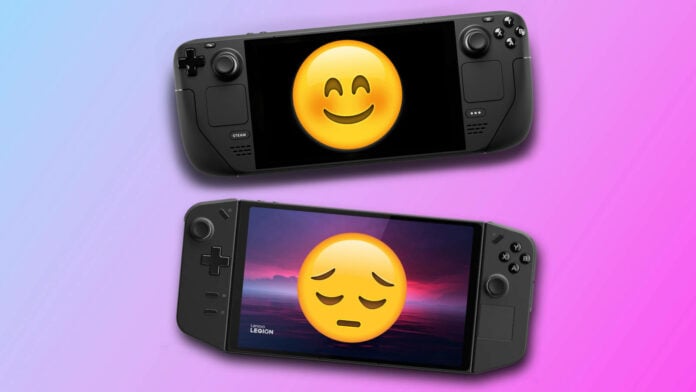When you buy a handheld gaming PC, you want to know it’s going to last. Since no tech is perfect, that all comes down to repairability, and it seems the Steam Deck OLED has the advantage over the Lenovo Legion Go.
As usual, iFixit’s teardown report bears all to the world. Both Valve and Lenovo have done a great job at making their devices fixable, but Steam Deck OLED is ever so slightly easier to repair than Legion Go. It’s a close competition. After all, the two devices are on equal footing when it comes to the display and controllers. Still, there’s a lot more going on under the hood.
Lenovo Legion Go makes it easier to remove the battery with a pull-tab. Valve’s L-shaped solution, on the other hand, uses less glue than its predecessor but still a tad too much. Where Legion Go falters is in its complexity. “Component and cable placement throughout the handheld make it cumbersome to access a number of different components,” explains writer Kevin O’Reilly. Such is the nature of a first iteration, and something that could improve with a successor. That said, an 8/10 score is still comparatively better than Valve’s first attempt.
Valve is on its second iteration of Steam Deck and it shows. The OLED’s minor improvements bump the score up from the LCD’s 7/10 to 9/10. Screw pillars now carry a metal thread to reduce the likelihood of stripping, bumper buttons connect to the thumbstick modules so they’re easier to replace, and the interconnect cable no longer sits underneath the mainboard.
What truly sets Steam Deck OLED apart is just how accessible replacement components are. Valve is happy to repair things in-house, but also provides OEM parts through iFixit and other vendors. Lenovo is currently first-party only, reducing the channels you can take to fix Legion Go. There’s a chance we could see Lenovo parts in the wild eventually. Steam Deck OLED takes the crown for now, but even iFixit admits gamers are the true winners with such repairable devices to choose from.

